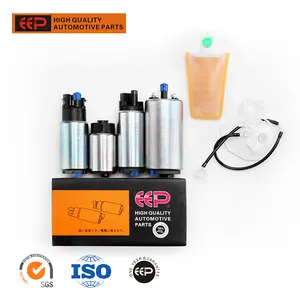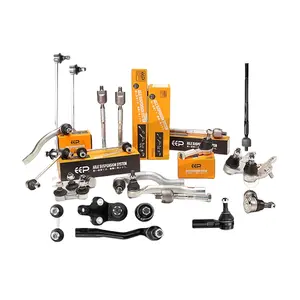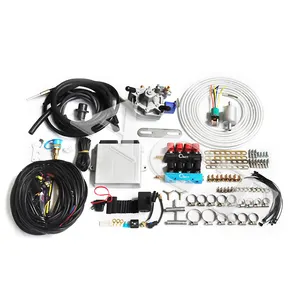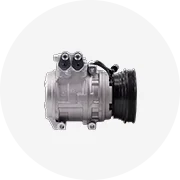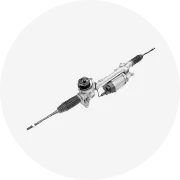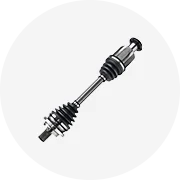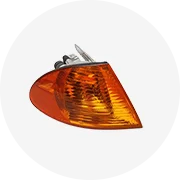Popolare nel tuo settore






GJF ricambi Auto asse asse CV asse albero di trasmissione sinistro destro per Toyota Nissan Honda Hyundai Kia Ford Volvo VW Mazda BMW Chevrolet
18,98 € - 28,27 €
Ordine minimo: 4 parti



Ingranaggi conici ipoidi a ingranaggi conici a spirale rettificati OEM professionali di alta qualità CNC
16,73 € - 21,37 €
Ordine minimo: 3 parti












Ingranaggio conico a spirale grande ISO 5 di alta precisione OEM con rapporti di qualità
113,34 € - 133,78 €
Ordine minimo: 1 parte







Alberi di trasmissione trasmissione di coda albero di trasmissione anteriore XM34-4602-HE muslimfor FORD RANGER B-0658 alberi di trasmissione cardanici
27,87 € - 106,84 €
Ordine minimo: 5 parti







Su misura di produzione di alta qualità Micro alberi di trasmissione del motore per i pezzi di ricambio del trattore
4,65 € - 4,84 €
Ordine minimo: 50 parti


Albero di trasmissione KBR per albero di trasmissione Audi Q7 OEM 7L8521102S/7L8521105
65,03 € - 120,77 €
Ordine minimo: 50 parti

Albero di trasmissione dell'albero di trasmissione dei ricambi Auto per Audi Q7 Cayenne 95542102015
108,70 € - 116,13 €
Ordine minimo: 2 parti






Albero cardanico muslimb anteriore motore corto anteriore 4.2 TDi 7 l8 521 101 C 4L per AUDI Q7
23,23 € - 32,52 €
Ordine minimo: 30 parti



Albero di trasmissione albero di trasmissione per VW Touareg Audi Q7 Cayenne 95542102015
Pronto per la spedizione
118,92 €
Ordine minimo: 1 parte
Spedizione per pezzo: 143,53 €






Albero di trasmissione dei ricambi Auto per l'albero di trasmissione Audi Q7 Q5 8R0407271G 8 r0 407 271G
Pronto per la spedizione
46,45 € - 65,03 €
Ordine minimo: 2 parti
Spedizione per pezzo: 16,73 €






Albero di Trasmissione Per La Audi Q7 Prop ShaftT Tailshaft Assy Trasmissione Drive Shaft Assy Albero Cardanico OE 7L8521102 Soluzione
Pronto per la spedizione
185,80 €
Ordine minimo: 10 insiemi
Spedizione per pezzo: 92,33 €
Ricerche correlate:
albero di trasmissione anteriore di vigore del hilux vigoalbero di trasmissione ford f250albero di trasmissione a camry toyotaoem hilux vigo albero di trasmissionealbero di trasmissione bmw x3albero di trasmissione di toyota innovaalbero di trasmissione bmw x5albero di trasmissione di toyota pickup hilux vigoalbero di trasmissione per peugeot 505mercedes un albero di trasmissione di classealbero di trasmissione freelander land roveralbero di trasmissione camion mercedes benzhilux vigo per albero di trasmissionealbero di trasmissione dell'outlander di mitsubishialbero di trasmissione per renault kangoo






Albero di trasmissione anteriore cardanico del Buggy della trasmissione dell'automobile dei pezzi di ricambio automatici di marca SPB 7 p0407271c per Audi Q7
36,05 € - 45,99 €
Ordine minimo: 50 parti






BBmart ricambi Auto albero di trasmissione posteriore albero di trasmissione universale per Audi Q7 2006-2015
Pronto per la spedizione
264,77 €
Ordine minimo: 1 parte
Spedizione per pezzo: 96,81 €





Albero di trasmissione albero di coda B-0311 albero di trasmissione OEM 7 l0521102m 7 l6521102c 7 l0521102b per albero di trasmissione VW TOUAREG AUDI Q7
83,61 € - 111,48 €
Ordine minimo: 50 parti




Albero di trasmissione anteriore 7L6521101B/H 7L0521101A/B/C/D per Audi Q7 Volkswagen Touareg
69,68 € - 78,97 €
Ordine minimo: 4 parti






ZPY per Audi Q7 albero di trasmissione dell'albero di trasmissione muslimah/D/F/G/H/M/N muslimate
Pronto per la spedizione
151,43 € - 153,29 €
Ordine minimo: 1 parte
Spedizione per pezzo: 56,10 €






Albero di trasmissione dell'albero di trasmissione dell'albero di trasmissione dell'albero di trasmissione dell'albero di trasmissione SENP per VW Touareg Audi Q7 Porsche Cayenne
Pronto per la spedizione
157,93 € - 185,80 €
Ordine minimo: 1 parte
Spedizione per pezzo: 75,97 €






Albero di trasmissione posteriore albero di trasmissione per Porsche per Volkswagen per Audi Q7 muslimate 95542102010
97,55 € - 104,70 €
Ordine minimo: 10 parti






Drive shaft volkswagen touareg propshaft prop shaft for audi q7 oem customized steel q7 l0521101 for audi q7 50pcs prop shaft drive shaft
92,90 € - 139,35 €
Ordine minimo: 100 parti






Albero dell'asse dell'albero di trasmissione anteriore automatico di TiBAO per Audi Q5 Q7 VW TOUAREG Porsche Cayenne 7P0521101Q 8 r0521101 5N7521101K
53,42 € - 241,54 €
Ordine minimo: 2 parti






Brand New albero di Trasmissione, Albero di Trasmissione 7L8521102 7L8 521 102 Per Audi Q7 VW touareg Q7 TOUREG, CAYYEN
2,79 € - 46,45 €
Ordine minimo: 100 parti



95542102015 shafts 7L0521102B elica principale alberi di trasmissione elica ad albero lungo per vw touareg audi q7 porsche Cayenne
Pronto per la spedizione
139,35 € - 185,80 €
Ordine minimo: 1 parte
Spedizione per pezzo: 64,11 €

Asse Cv utilizzato per VW TOUAREG Q7 CAYENNE OE NO.7L0407271F 7 l8407271 7 p0407271a
30,46 € - 32,06 €
Ordine minimo: 100 parti






OE # 7L8521102M 7L8521102F 7L8521102H 7L8521102D 7L8521102L A-udi Q7 albero di Trasmissione Posteriore
54,82 € - 64,11 €
Ordine minimo: 50 parti





Albero cardanico adatto ad AudiQ7 2011 2012 2013 2014 2015 AWD centro sprinter albero di trasmissione propsy albero OEM:7 l8521105
108,14 € - 136,75 €
Ordine minimo: 5 parti






Albero di trasmissione dell'asse CV anteriore di vendita caldo CCL per AUDI Q7/PORSCHE CAYENNE 95534903813 95534903811 7 l0407271a 7 l0407271 muslimate
26,02 € - 44,60 €
Ordine minimo: 2 parti






Di alta qualità dopo le parti del mercato del sistema di trasmissione automatica albero di trasmissione per OE 7 p0407271c adatto per AUDI per VW per PORSCHE
29,84 € - 31,52 €
Ordine minimo: 50 parti






CCL vendita all'ingrosso parti auto universale assemblaggio assale motore cv asse albero di trasmissione sinistra per Audi PORSCHE VW 7 l0407271b
33,45 € - 37,16 €
Ordine minimo: 2 parti
Spedizione per pezzo: 33,26 €






EPX-AD-8-024 albero di trasmissione di alta qualità per Volkswagen Touareg Porsche Cayenne assale carparts 7 l0407271a 7 l0407271b
28,15 € - 42,14 €
Ordine minimo: 2 parti






Muslimb albero di trasmissione posteriore per Audi Q7 2011-2015 albero di trasmissione muslimexayb albero di coda dell'elica
65,03 € - 111,48 €
Ordine minimo: 3 parti





Vendita in fabbrica parti trasmissione Auto alberi di trasmissione anteriore per Volkswagen TOUAREG OE 7 l0 521 101H
47,85 € - 50,64 €
Ordine minimo: 2 parti






Sistemi di trasmissione MANER T4A1864 produttore albero di trasmissione genuino per giaguaro F-Pace (X761) 2015-
128,67 € - 154,03 €
Ordine minimo: 10 parti

Semialbero cv dell'asse motore anteriore sinistro posteriore della trasmissione automatica per Audi VW 7 l0407271f
6,69 € - 16,73 €
Ordine minimo: 50 parti






SenPei pezzi di ricambio per autoveicoli sistema di trasmissione albero di trasmissione per Audi 4 m0 407 271 D di alta qualità
83,61 € - 92,90 €
Ordine minimo: 10 parti

Casschoice parti auto di alta qualità asse anteriore cv sinistra asse albero motore 7 l0407271a per VW
56,95 € - 58,07 €
Ordine minimo: 10 parti






VD-l'albero di trasmissione posteriore per VW Audi Q7 Porsche Cayenne 9 pa1 2007-2010
109,63 € - 116,13 €
Ordine minimo: 2 scatole
Migliori categorie
Su audi q7 albero di trasmissione
Alibaba.com offre prodotti 247 audi q7 albero di trasmissione. È disponibile una vasta gamma di varietà di audi q7 albero di trasmissione, quali corolla, camry, e universale. È inoltre possibile scegliere tra honda, per ford, e mercedes-benz audi q7 albero di trasmissione. Così come da acciaio inox, di alluminio/lega audi q7 albero di trasmissione.E se il audi q7 albero di trasmissione è guida a destra albero, albero di trasmissione di sinistra.


